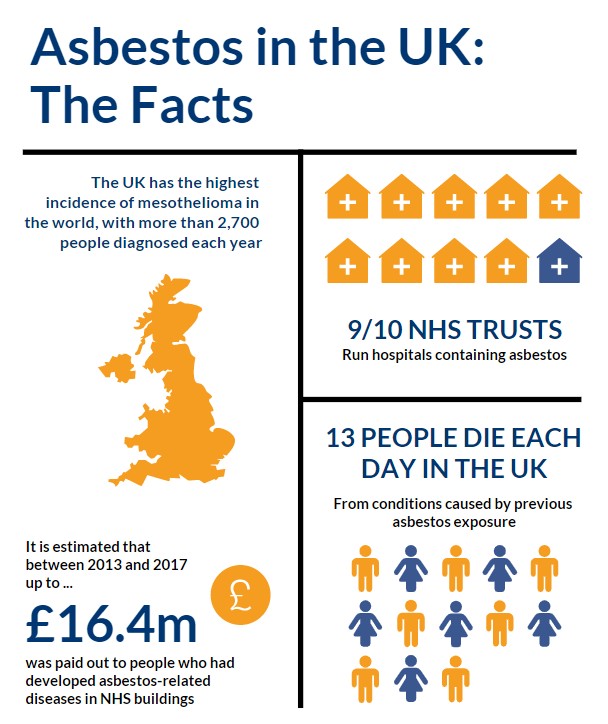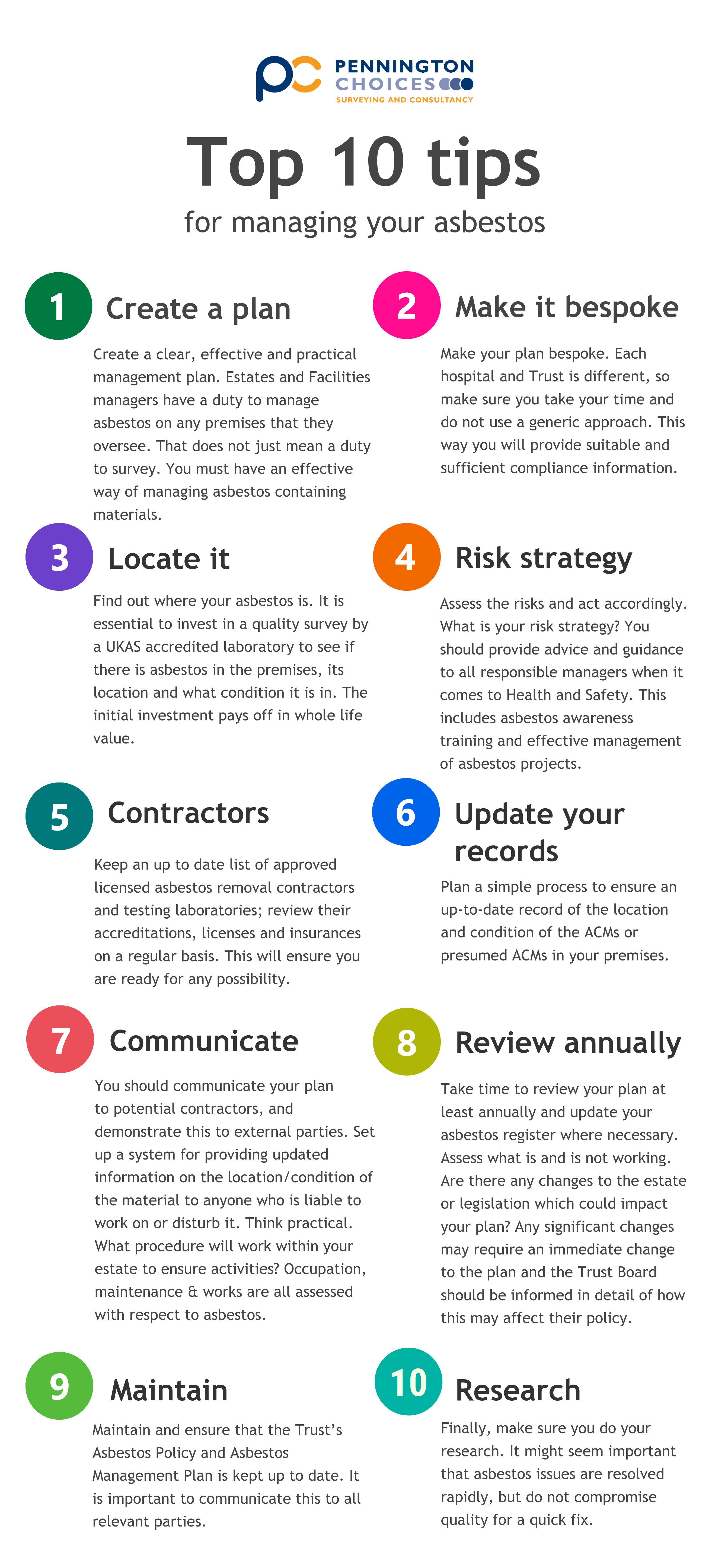Sign up to our newsletter
According to statistics from the Health and Safety Executive, there are over 5000 asbestos related disease deaths in the UK each year. That’s more than 13 people a day.
These frightening numbers are only on the rise, and experts claim that cases of cancers caused by asbestos are becoming more common among professional workers such as doctors and teachers.

In light of these figures, NHS Trusts are being scrutinised for their management of asbestos containing materials (ACM) within their hospitals.
Every Estates and Facilities manager within the NHS holds a duty to manage asbestos under regulation 4 of the Control of Asbestos at Work Regulations 2012 and failing to do so can be catastrophic.
Recently, Shrewsbury and Telford Hospital (SaTH) NHS Trust were found to have breached the ‘Control of Asbestos at Work Regulations 2012’. According to a report from HSE, contractors had disturbed asbestos when removing fixtures and fittings form a property, which had previously been reported as suspicious by a member of staff. SaTH had "failed to take adequate measures to deal with the initial release of asbestos, exposing other contractors who later worked in the nursing accommodation". HSE inspector David Kivlin said: “The Trust should have controlled this potentially lethal risk by identifying the type, location and condition of any ACMs within the accommodation block at the Royal Shrewsbury Hospital by implanting suitable precautions to prevent its disturbance.
SaTH are no anomaly, as nearly nine in ten NHS Trusts run hospitals containing asbestos. So what can be done to manage asbestos correctly?







.webp?width=578&height=325&name=ezgif.com-gif-maker%20(5).webp)
